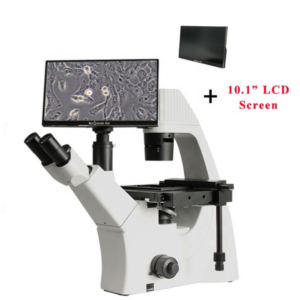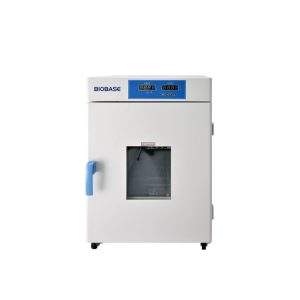The ultrasonic cleaner is a microprocessor-controlled device that uses ultrasonic or high-frequency sound waves to clean the jewelry and other delicate items. Ultrasonic cleaning is based on the cavitation effect caused by high-frequency ultrasonic wave vibration signals in fluid. Microscopic bubbles that expand and rapidly collapse cause cavitation, which creates an effective cleaning action on the surface of the object being cleaned. Additionally, the bubbles are small enough to penetrate even microscopic crevices, cleaning them thoroughly and consistently.

Conduct Science is a premier manufacturer of research infrastructure, born from a mission to standardize the laboratory ecosystem. We combine industrial-grade precision with a scientist-led tech-transfer model, ensuring that every instrument we build solves a real-world experimental challenge. We replace "home-brew" setups with validated tools ranging from microsurgical suites to pathology systems. With a track record of >1,600 institutional partners and hundreds of citations, our equipment is engineered to minimize human error. We help you secure more data for less of your budget, delivering the reliability required for high-impact publication.

bool(false)


bool(false)
| Capacity | 2L | 3.2L | 6.5L | 10L | 15L | 20L | 22L | 30L |
|---|---|---|---|---|---|---|---|---|
| Ultrasound frequency (Khz) | 40KHZ | 40KHZ | 40KHZ | 40KHZ | 40KHZ | 40KHZ | 40KHZ | 40KHZ |
| Ultrasonic power | 80W | 120W | 180W | 240W | 360W | 420W | 480W | 600W |
| Voltage (V) | AC220V 50Hz / 110V 60Hz | AC220V 50Hz / 110V 60Hz | AC220V 50Hz / 110V 60Hz | AC220V 50Hz / 110V 60Hz | AC220V 50Hz / 110V 60Hz | AC220V 50Hz / 110V 60Hz | AC220V 50Hz / 110V 60Hz | AC220V 50Hz / 110V 60Hz |
| Heating power | 50W | 100W | 250W | 300W | 400W | 600W | 600W | 800W |
| Temperature Setting | 20℃-80℃ | 20℃-80℃ | 20℃-80℃ | 20℃-80℃ | 20℃-80℃ | 20℃-80℃ | 20℃-80℃ | 20℃-80℃ |
| Tank Material | Stainless Steel SUS304 | Stainless Steel SUS304 | Stainless Steel SUS304 | Stainless Steel SUS304 | Stainless Steel SUS304 | Stainless Steel SUS304 | Stainless Steel SUS304 | Stainless Steel SUS304 |
| Plug Type Available | US or EU | US or EU | US or EU | US or EU | US or EU | US or EU | US or EU | US or EU |
| Timer Setting | 1 - 30 mins | 1-99mins | 1-99mins | 1-99mins | 1-99mins | 1-99mins | 1-99mins | 1-99mins |
| Tank size (LxWxH mm) | 150x135x100 | 240x135x100 | 300x150x150 | 300X240X150 | 330X300X150 | 330X300X200 | 500X300X150 | 500X300X200 |
| Product size (LxWxH mm) | 180x165x210 | 280x180x210 | 330x180x280 | 330x270x280 | 360x330x280 | 360x330x330 | 550x330x280 | 530x330x330 |
| Gross weight | 3kgs | 4kgs | 6.5kgs | 8.6kgs | 10.2kgs | 11.6kgs | 14.8kgs | 16.6kgs |
| Vibrator | 2pcs | 2pcs | 3pcs | 4pcs | 6pcs | 6pcs | 8pcs | 10pcs |
| Package Content | 1 x Ultrasonic Cleaner 1 x Cleaning Basket 1 x Instruction Manual | 1 x Ultrasonic Cleaner 1 x Cleaning Basket 1 x Instruction Manual | 1 x Ultrasonic Cleaner 1 x Cleaning Basket 1 x Instruction Manual | 1 x Ultrasonic Cleaner 1 x Cleaning Basket 1 x Instruction Manual | 1 x Ultrasonic Cleaner 1 x Cleaning Basket 1 x Instruction Manual | 1 x Ultrasonic Cleaner 1 x Cleaning Basket 1 x Instruction Manual | 1 x Ultrasonic Cleaner 1 x Cleaning Basket 1 x Instruction Manual | 1 x Ultrasonic Cleaner 1 x Cleaning Basket 1 x Instruction Manual |
Ultrasonic cleaners are immersion cleaners that utilize high-frequency and high-intensity ultrasound waves to remove contamination from surfaces in an “ultrasonically activated liquid” (Fuchs, 2015). The machine employs the phenomenon of cavitation (microscopic bubble formation) for cleaning. It consists of a metal tank with transducers attached to the bottom or sidewall. A cleaning fluid is introduced into the tank. Ultrasonic cleaners are used in animal labs to clean surgical tools and murine implants and prepare uniform solutions by sonication.
Ultrasonic waves are vibrations with frequencies above the audible human frequency range. They may be classified into two types: power ultrasound and diagnostic ultrasound—the introduction of ultrasonic waves in a liquid results in two major phenomena, i.e., cavitation and heating. Cavitation is described as the formation of bubbles in a liquid. Bubbles generated and collapsed by ultrasonic waves cause physical and chemical effects on liquid/liquid or solid/ liquid systems. Cavitation causes strong agitation of the liquid surfaces, thereby producing bubbles that expand and collapse, resulting in the cleaning of surfaces. These microscopic bubbles reach deep crevices and scrub for deep cleaning. The ultrasonic cleaner works best if the cavitation is fine and manifold (Wang et al., 2012).
Two important characteristics related to cavitation that make the ultrasonic cleaner a powerful device for surface decontamination include:
Parameters affecting the efficiency of ultrasonic cleaners
The solvent used as cleaning fluid in ultrasonic cleaners must also serve as an organic fluid that carries vibrations from the transducer to the surface being cleaned. The chemical properties of the solvent must allow it to solvate maximum possible contamination. Therefore, the cleaning fluid should have appropriate viscosity, vapor pressure, surface tension, and good cavitating properties.
The bath temperature is an important parameter that affects the efficiency of ultrasonic cleaners. Temperature affects the cleaning fluid’s cavitation intensity. Maximum cavitation intensity for water is 35oC, whereas it lies between 50oC and 65oC for most aqueous cleaning solutions. The researchers suggest that reagents like acids, detergents, or alkalis added to the cleaning solutions show a stronger cleaning effect at higher temperatures.
The performance of ultrasonic cleaners is also affected by acoustic standing waves. A standing wave is produced when the transducer at the tank’s base generates a single frequency and hits the liquid surface before reflecting into the tank. This standing wave produces cavitation zones over the bath’s depth equivalent to “half-wave distances for the frequencies used.” A circuit is inserted into the ultrasonic cleaner to resolve the problem. This circuit causes the signal sent to the transducer to have a slight frequency variation over a given time duration, i.e., a frequency sweep. The frequency sweep ultimately prevents standing waves.
The ultrasonic cleaners worked earlier at a frequency of 20kHz, but it was audible to some young workers. Nowadays, cleaners with 40kHz frequency are used. This frequency is inaudible to researchers of all ages. Recently, megasonic cleaners operating at 1MHz frequency have been developed (Mason, 2016).
An ultrasonic cleaner is a stainless-steel tank with piezo-ceramic transducers. These transducers, present at the tank’s base, are connected to an ultrasonic generator. The tank contains cleaning fluid that is water in most cases. If the tank is fitted with transducers and produces cavitation, it is considered active. The tank can be activated by either inserting an immersible transducer or connecting the transducers to the bottom or sides of the tank. Consequently, the tank’s inner surfaces are energized, and cavitation is produced.
The ultrasonic cleaners used in the laboratory have a deep-drawn tank with transducers fitted to the tank’s base or sidewall. These transducers energize the wall/bottom and transfer vibrational energy to cavitate the cleaning fluid. Ultrasonic cleaners available at Conduct Science have a 6.5L capacity and 33cm×18cm×28cm dimensions.
Cleaning Murine Implants before Surgery
Millard and Shepherd (2007) used an ultrasonic cleaner to clean a single-channel stimulator designed for chronic stimulation of neural tissue in rodents before implant. The researchers rinsed the stimulator in double-distilled water for 20 minutes and then rinsed it in an ultrasonic cleaner for 20 minutes. The cleaner had 100% ethyl alcohol. Following this, the stimulator was cleaned using double-distilled water. Then, they dried the assembly at 37oC, sterilized it, and implanted it into the animal. They observed that the stimulator successfully delivered electrical pulses to the neural tissue.
Preparing Uniform Solutions during experiments
Keough et al. (2015) used lysolecithin as a focal injection for the demyelination and remyelination of the murine spinal cord. The researchers dissolved lysolecithin in 1% PBS (phosphate buffer saline) solution, prepared its 75µl aliquots, and stored them at -20oC. They sonicated the lysolecithin tube in an ultrasonic cleaner for half an hour to prepare a uniform solution. The frozen solution was thawed to room temperature before use.
Post-surgical Cleaning of Surgery Tools
Shih et al. (2012) studied blood flow and neurovascular coupling in rodent brains using two-photon microscopy. The researchers employed stereotaxic surgical procedures to produce cranial windows for convenient optical access to the rodent cortex. Before initiating surgery, they used an ultrasonic cleaner to clean all tools by sonication before surgery. Surgical Milk and Maxizyme were used as cleaning fluids.
Cleaning of Endodontic Instruments
A study conducted by Perakaki, Mellor, and Qualtrough (2007) investigated whether the ultrasonic cleaner or washer-disinfector was more effective at cleaning endodontic instruments. The results indicated that although both methods of cleaning were effective at cleaning residual debris from the endodontic files than the control group, significantly lesser residual debris was seen in the files cleaned with the ultrasonic cleaner.
Exfoliation of Graphite Oxide (GpO) to obtain Graphene Oxide Sheets
Graphene Oxide (GO) is used in applications of biotechnology, medicine, optics, electronics, chemistry, and energy storage. It is obtained through the exfoliations of GpO, which are performed by either probe sonicators or bath sonicators (Ultrasonic Cleaner). Mellado, Figueroa, Baez, Meléndrez, and Fernández (2019) conducted an experiment to assess which cleaning method causes less damage to the graphene oxide sheet structure and morphology after exfoliation.
X-ray diffraction, Atomic force microscopy, z-potential analysis, Scanning electron microscopy, Elemental analysis, Fourier transform infrared (FTIR) spectrometry and Raman spectroscopy were the techniques used to characterize the structure, morphology, oxygen content, exfoliation content, and surface charge of the GPO and GO samples. The results indicated that probe sonication caused deformities between the layers of the GpO samples, degrading their morphological properties and causing greater rugosity. Moreover, it caused a reduction in the number of functional groups available for further chemical transformation. On the other hand, the ultrasonic cleaner caused less damage and fewer wrinkles to the structure and morphology of the GO sheets since it was a less invasive technique and the sample temperature was easily controlled.
Tenderization of Raw Seafood
Chang and Wong (2018) investigated the tenderization effects of the Ultrasonic bath on farmed cobia sashimi. The ultrasonic cleaner’s tenderization effects were compared with aged treatment by analyzing the textural and biochemical characteristics of farmed cobia sashimi subjected to either treatment. The results from the aged treatment indicated that the sashimi samples’ texture reached the optimal range on day seven, but this decreased its freshness. Therefore, this treatment cannot be used in restaurants. On the other hand, tenderization with the ultrasonic bath resulted in optimal firmness after 90 minutes of treatment. The ultrasonic treatment was observed to accelerate the biochemical reactions in the samples. Therefore, it shows potential for use in the restaurant industry.
The first and foremost advantage of ultrasonic cleaners is that microscopic bubbles produced by cavitation can reach crevices that are otherwise inaccessible with traditional cleaning methods. Secondly, ultrasonic cleaners allow robust cleaning of surfaces and require less time to clean. Thirdly, the frequency sweep used to avoid standing waves ensures uniform cleaning. Lastly, the jet formed by the collapse of cavitation bubbles provides a cleaner solvent for washing the surface (Mason, 2016).
A potential disadvantage of ultrasonic cleaners is that they comprise electronic parts that can be damaged on exposure to higher temperatures. Therefore, optimum temperature levels must be maintained while using these cleaners.
Precautions
| Capacity | 2L, 3.2L, 6.5L, 10L, 15L, 20L, 22L, 30L |
|---|---|
| Material | Stainless Steel, SUS304 |
| Power | 100W, 250W, 300W, 400W, 50W, 600W, 800W |
| ultrasonic-power | |
| ultrasound-frequency | |
| vibrator | |
| Working Voltage | American Standard: ~110V/60HZ, British and European Standars: ~230±10V/50HZ |
You must be logged in to post a review.
There are no questions yet. Be the first to ask a question about this product.
Reviews
There are no reviews yet.